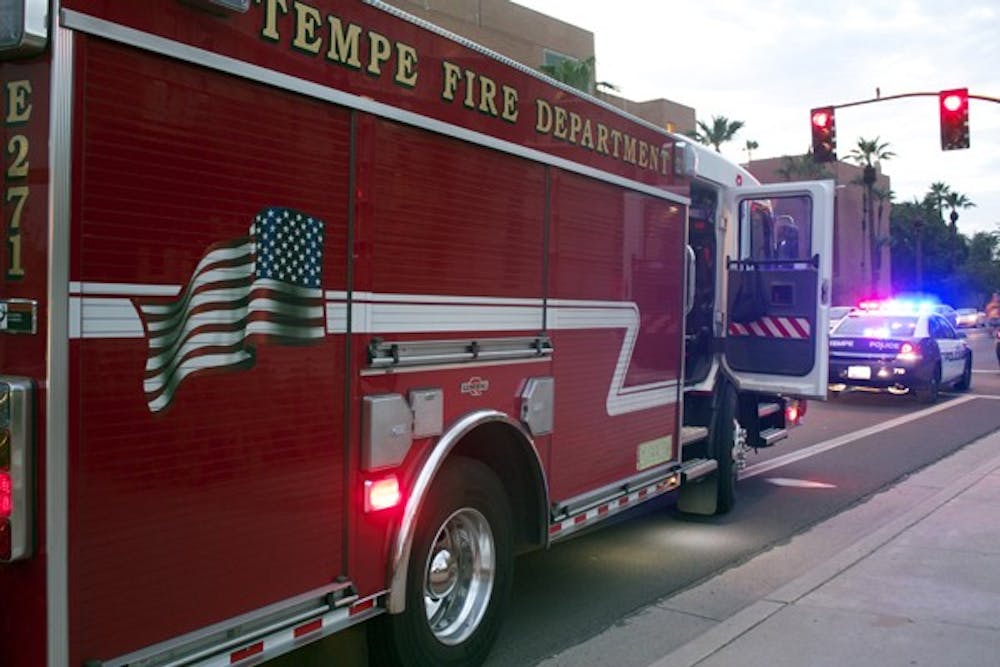In an effort to further protect University staff and students from potential harm, ASU Police has posted safety-training videos through Blackboard, providing instructions on what to do during various emergency situations, including encountering a shooter on campus.
“(The videos are) helpful and we just wanted to make them available to the community because when you go to educate over 100,000 people it can get kind of difficult,” ASU Police Cmdr. Rich Wilson said.
The Center for Protection and Personal Safety produced and marketed the video presentations to college campuses, corporations and government agencies across the U.S.
Senior account executive Steve Warren said Randy Spivey, the company’s CEO and former hostage survival program director for the U.S. Department of Defense, started the company "as an effort to educate and power individuals to be safe."
There are six videos viewers may choose, each ranging between 18 and 22 minutes. Topics of the videos include what to do when shots are fired on campus, preventing violence in the workplace and how to stay vigilant when escaping a shooter on campus.
“Essentially it talks about warning signs for potential violence, things to look for, actions to take in the event of an emergency, things to consider in terms of evacuating or sheltering in place (and) getting out of that type of situation,” Wilson said.
Library specialist Christina Peck, who works at the Tempe campus Noble Science Library, said the most important thing she learned from watching the videos was to stay calm and not panic.
“If something like that were to happen, most people would start to panic and that’s the worst thing you could do,” she said. “So you need somebody that’s calm to be like, ‘OK, we need to get out or go to a secure place.’”
According to various media reports, panic among students and faculty was prevalent in the case of the Virginia Tech shooting in 2007. Some students were unaware of a shooter even on campus.
Virginia Tech student Seung Hui Cho killed 32 people on the Blacksburg, Va., campus before taking his own life. Finance junior Daniel Becker said he wouldn’t know what to do in a similar situation other than go on with his day unless the action is directly in front of him.
Becker said his first instinct would be to, “probably contact my friends, see where they are, see if they’re (near the shooting),” he said. “If I’m supposed to stay in a building, I’ll stay in a building, if I’m supposed to leave campus, I’ll leave campus.”
According to the safety video “Shots Fired On Campus,” the odds of being involved in a campus shooting are the same as being struck by lighting.
On Nov. 3 David Huynh, 36, fired a single shot from his handgun at students hanging out at the volleyball courts on the West campus. No one was harmed.
The ASU community was notified a short time after the shooting via the University’s alert and advisory system, which sends out text messages to students. The alert system is used in emergency situations, and students and faculty must be registered to receive the alerts.
The “Shots Fired On Campus” video advises students in a shooter situation to silence their cellphones and other noises around them after receiving the news or alerts of the emergency.
“I’m not sure what I’m supposed to do,” Becker said. “So if I watched (the video) and it gave me some ideas of what we’re supposed to do, I’d do it.”
According to a University press release, the presentations should encourage viewers to watch the videos and learn about avoiding potentially violent situations.
Fine arts sophomore Martha Hernandez said the videos won’t hurt, but ultimately the idea of getting away from a harmful situation such as a shooter on campus should be common sense.
“I’m sure there’s a little paranoia we’ve all had,” she said. “(But) for the most part … being aware and usually walking away from situations or knowing how to report (it should be common sense).”
For now, students and faculty can enroll in any of the online training courses through the ASU News or ASU Police websites, and are encouraged to take notes during the videos. After viewing the videos, a questionnaire can be taken on Blackboard to review what was discussed through the training demonstrations.
The videos will be easily accessible to the ASU community after enough viewer response has been collected, the University press release stated.
Louisiana State University has also implemented the training videos into their safety programs as well as the University of Oregon, Notre Dame and California State universities.
“We really have a heart for empowering the individuals to become stakeholders in their own safety and security,” Warren said.
Reach the reporter at sraymund@asu.edu
Click here to subscribe to the daily State Press newsletter.





